Did you know? According to the National Highway Traffic Safety Administration, motorcyclists are 28 times more likely than car drivers to die in a crash per vehicle mile traveled. This unsettling truth highlights just how vital defensive riding strategies are for every motorcycle rider. If you want to stay safe on the road, understanding and mastering defensive riding techniques is not just an option—it's a necessity. Today, we break down practical, proven approaches you can begin using right now to protect yourself whenever you ride.
Startling Motorcycle Accident Facts: Why Defensive Riding Strategies Are Essential
"Studies show that motorcyclists are 28 times more likely than passenger vehicle occupants to die in a crash per vehicle mile traveled." — National Highway Traffic Safety Administration
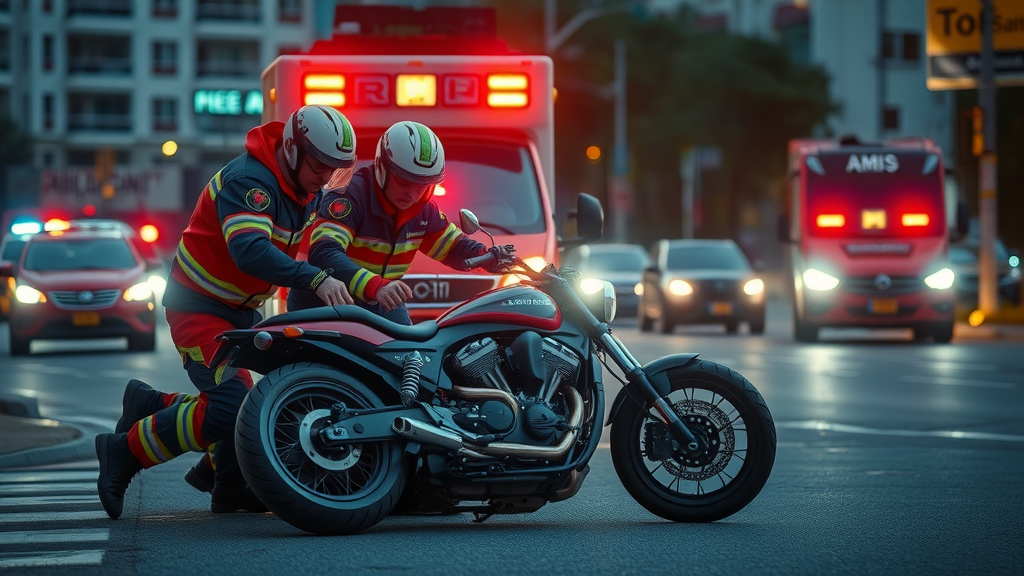
Understanding the High Stakes of Motorcycle Safety
In the world of motorcycling , every ride is a negotiation with risk. Unlike drivers in cars, motorcycle riders face greater exposure and fewer physical protections. Traffic can change in an instant, road conditions may shift unexpectedly, and other road users often overlook riders, placing them in unnecessary danger. This is why motorcycle safety isn’t only about following laws—it's about riding skills , preparation, and anticipating what other drivers might do. The consequences of a motorcycle accident can be severe, including lifelong injuries, major financial challenges, or worse.
Effective defensive riding strategies empower you to take control of your safety on the road. By understanding key facts—like the elevated risk of fatality and the prevalence of visibility-related accidents—you can begin shaping your habits for survival. Defensive riding doesn't just mean reacting; it means planning, positioning, and preparing every moment you ride. This proactive approach is the single best way to reduce the risks unique to motorcycling, helping you stay safe no matter the environment or weather conditions.
By incorporating these principles into every journey, you directly address the dangers outlined in accident statistics and move from being a passive participant on the road to an active, safety-focused rider. Let's explore how you can do exactly that.
Mastering Defensive Riding Strategies: Core Principles for Every Rider
-
Defensive riding fundamentals: Anticipation and preparation
-
Risk mitigation through situational awareness
-
Staying visible and understanding blind spots
Defensive riding strategies begin with a mindset of continuous anticipation and preparation . The most skilled motorcycle riders don't just operate the controls; they scan the road , read the traffic patterns, and anticipate every possible move nearby vehicles might make. This mental approach—sometimes called riding is a mindset —requires you to expect the unexpected. When you prepare mentally and remain alert physically, you’re better equipped to avoid or minimize the impact of potential hazards .
Another cornerstone of defensive riding is risk mitigation through situational awareness . This isn’t just about seeing what’s in front of you. It means knowing what’s happening all around, including checking your mirrors frequently and predicting how traffic behavior could change. Situational awareness is your early warning system that helps you react in time to unexpected situations and allows you to make split-second decisions that could save your life.
Lastly, staying visible and understanding blind spots for both yourself and for other drivers is key. Wearing bright or reflective gear, using your headlights—even during the day—and maintaining a position on the road where you are most visible can dramatically reduce your risk of being missed by a turning car or a sudden lane change. Use your turn signals and brake light to communicate your intentions, and remember that clear communication on the road is a vital component of defensive riding.
Key Defensive Riding Skills for Daily Rides
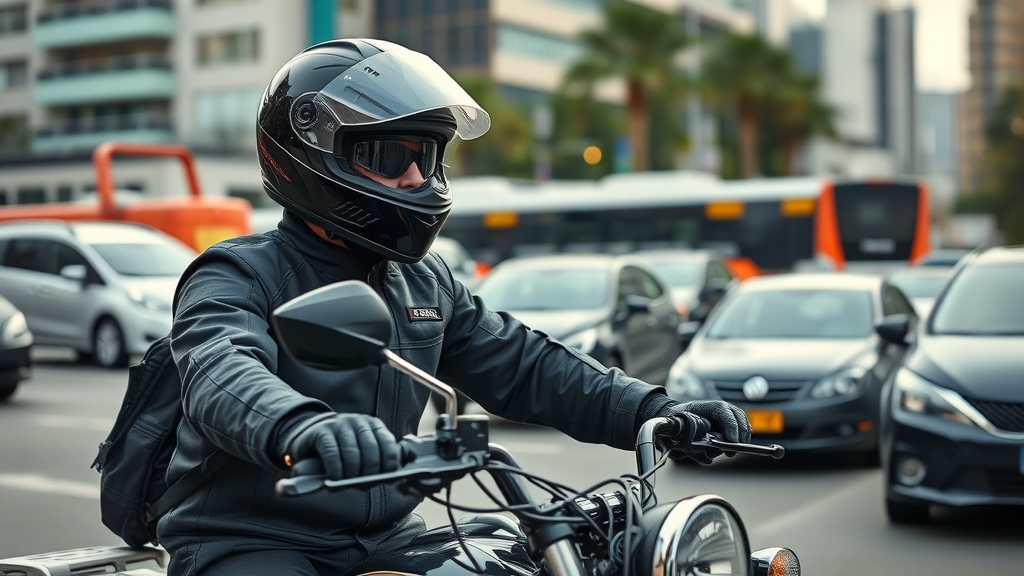
When it comes to daily commuting or leisure riding , several defensive riding skills stand out as essential. First, maintain a safe following distance . Always leave room between your motorcycle and the vehicle in front —the standard recommendation is at least a 2-4 second buffer to allow enough time to react to sudden stops or swerves. This simple habit gives you precious moments to avoid collisions and adjust your path smoothly.
Second, never stop scanning for potential hazards . Continuously watch for things like cars pulling out, debris on the road, erratic drivers, and even unpredictable pedestrians. Remember, the more you scan, the more likely you’ll identify and mitigate risks before they become real threats. Riding techniques like visually "sweeping" the road ahead and keeping your head moving amplify your situational awareness.
Finally, always anticipate other drivers' unpredictable actions . Assume that another driver may not see you, may suddenly change lanes, or could even run a stop sign. The best motorcycle riders mentally prepare for these possibilities and keep fingers over brake controls and adjust their riding line accordingly. By developing these defensive riding skills , you significantly enhance your safety on the road and reduce the chance of a motorcycle accident .
Most Effective Defensive Riding Techniques to Prevent Motorcycle Accidents
-
Maintaining safe following distances
-
Scanning for potential hazards
-
Anticipating other drivers' unpredictable actions
Defensive riding techniques are your best defense against everyday roadway risks. Maintaining a safe following distance —generally a 2-4 second gap—gives you the critical advantage of visibility and reaction time. This buffer zone can make the difference between a near-miss and an avoidable collision.
Always scan for potential hazards : potholes, merging vehicles, aggressive drivers, and changing traffic signals. By continuously observing your surroundings and future path, you can spot dangers while they are still manageable, helping you adjust your speed and position long before trouble arises. Combine this with defensive use of the horn, lights, and turn signals to alert others to your presence and intentions— clear communication is key to ensuring your safety .
To manage unpredictable drivers, anticipate risky scenarios: expect a car to move without signaling, or a distracted driver to drift into your lane. By mentally rehearsing what you would do if something goes wrong, you not only react faster but often avoid dangerous situations entirely. Integrate these defensive riding strategies into your regular riding routine to build strong habits and improve your overall motorcycle safety .
|
Technique |
Purpose |
Practical Example |
|---|---|---|
|
Maintain buffer zone |
Reduces collision risk |
Keep 2-4 second gap |
|
Use of lights/horn |
Increases visibility |
Signal when overtaking |
|
Mirror checks |
Prevents surprises |
Every 5-8 seconds |
Blind Spots: How to Manage and Minimize Hidden Dangers
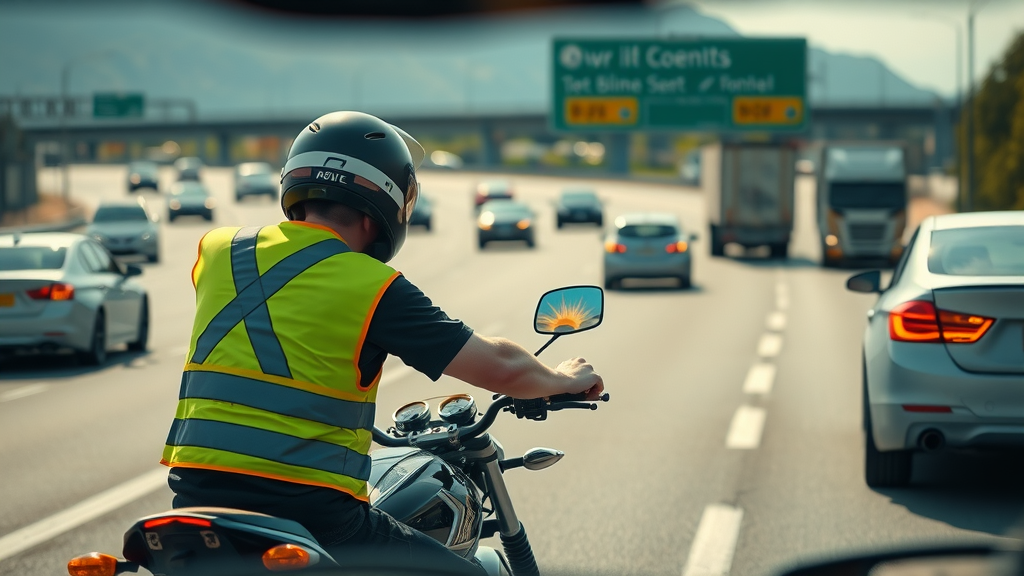
Blind spots are a significant cause of motorcycle accidents . Many road users simply cannot see motorcyclists in their side or rearview mirrors, especially when motorcycles travel alongside larger vehicles like trucks or SUVs. To mitigate this risk, always ride where you are most visible—ideally, so you can see the driver’s face in their mirror. If you cannot, assume you’re invisible to that driver. Wear bright or reflective clothing, use your headlight even during the day, and avoid lingering in a vehicle’s blind spot. Proper lane positioning enhances your visibility and reduces the chance of surprises.
Proactively manage your own blind spots as well. Frequently check your mirrors and make quick shoulder glances—sometimes called "head checks"—before changing lanes or turning. This simple habit prevents collisions with vehicles or cyclists you might miss otherwise. Use your turn signal early and keep your intentions clear, giving others time and space to react appropriately.
Adopting these visibility-focused riding techniques strengthens your defensive riding foundation and supports your goal of staying as safe as possible on the road. Remember, every precaution you take is another step toward helping you stay injury-free and confident on every ride.
The Role of Situational Awareness in Advanced Defensive Riding Strategies
-
Understanding situational awareness on the road
-
Identifying and predicting hazards
-
Responding to rapidly changing scenarios
Situational awareness is the backbone of all defensive riding strategies . It means being completely tuned in to your environment—traffic flow, road surface, weather, and even the emotional state of other drivers. A vigilant rider regularly evaluates intersections, monitors sidewalk activity, and keeps an eye out for delivery vans, cyclists, and sudden obstacles. This approach helps you scan the road ahead continuously, increasing your safety on the road .
To identify and predict hazards , use active observation. For example, if you see a car's brake light flicker, anticipate that vehicle may slow or stop abruptly. If a parked car's wheels are turned out, expect a possible entry into your lane. By weaving proactive hazard management into your rides, you’re always a step ahead and can take evasive action smoothly.
Responding to rapidly changing scenarios often separates seasoned riders from beginners. Traffic jams, bad weather, and distracted drivers introduce unpredictable variables into any journey. Always have an exit plan, think defensively about where you could steer in an emergency, and rehearse these escape routes while you ride. By keeping your awareness dynamic, you champion defensive riding in real time.
Enhancing Safe Riding with Predictive Observation
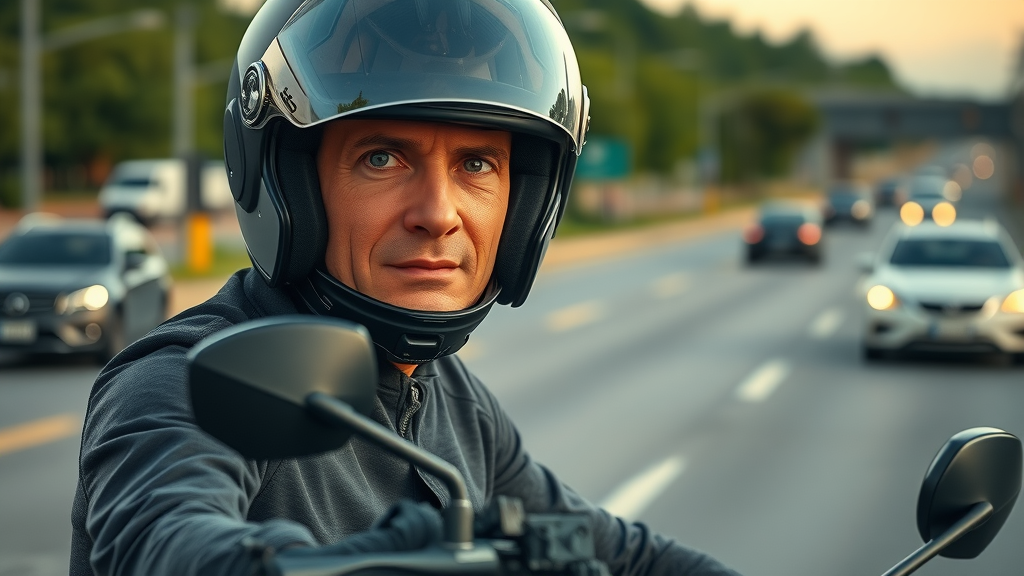
Predictive observation elevates safe riding by teaching you to read the road like a chess match—several moves ahead. This skill is about noticing small cues: a driver checking mirrors before merging, a child approaching a crosswalk, or a truck’s load shifting in the breeze. Each signal provides an opportunity to make adjustments and maintain control.
Practicing predictive observation involves more than just keeping your eyes moving; it’s about constantly updating your mental “map” of the road. Are cars bunching up at an intersection? Is a bicycle about to enter your lane? When you spot these indicators, you can reduce speed or change your position preemptively, ensuring you always have enough time to react to unexpected situations .
By mastering this advanced aspect of situational awareness , you create a safety buffer that protects you from the unexpected. Remember, defensive riding is about being proactive—not simply reacting when danger appears but preventing it from materializing in the first place.
Critical Riding Skills That Strengthen Defensive Riding Strategies
-
Braking techniques for emergencies
-
Controlled steering and cornering
-
Proper use of motorcycle controls during evasive maneuvers
No set of defensive riding strategies is complete without practical riding skills —especially braking, steering, and emergency control. When an obstacle appears or a vehicle in front suddenly stops, your ability to apply the brakes smoothly and progressively can prevent a crash. Practice using both front and rear brakes together, and always be prepared for quick stops without skidding or losing control.
Controlled steering and cornering are vital techniques. Enter every turn at a speed that allows you to adjust mid-curve if something unexpected appears—like gravel or an oncoming car crossing the center line. Look where you want to go, not at the obstacle, and use your core and arms to guide the bike firmly but gently. Building these skills helps you stay safe whether you're enjoying a winding rural road or navigating city streets.
Effective use of motorcycle controls during evasive maneuvers means balancing throttle, brakes, and clutch quickly and seamlessly. Drill emergency swerving and braking in safe, controlled areas so when the time comes, your actions are automatic and precise. The more you practice, the better your instincts and muscle memory will become—ensuring your defensive riding is as effective as possible in real-world emergencies.
Defensive Riding Skills for Adverse Weather and Night Riding
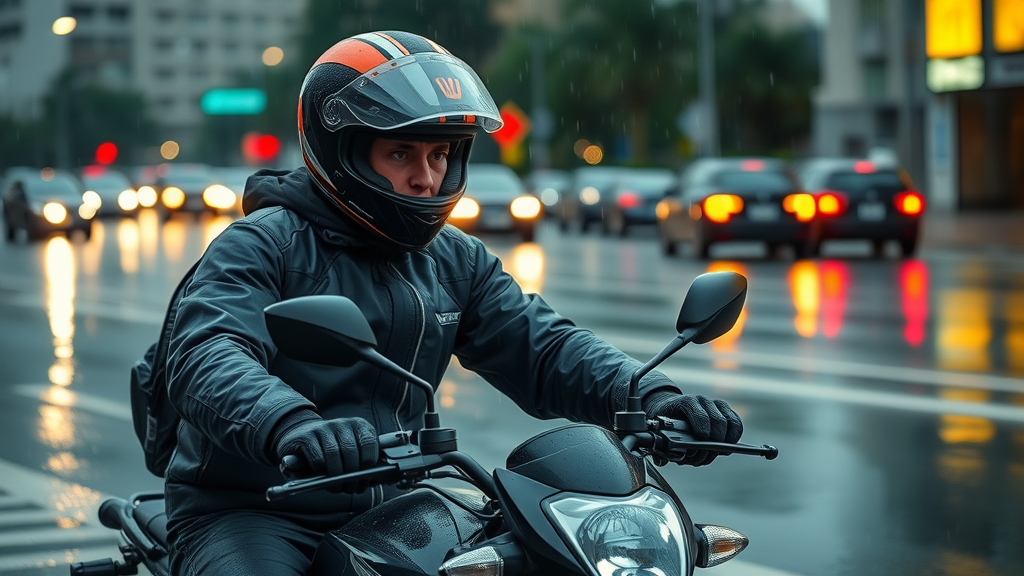
Adverse weather and night riding add a whole new layer of complexity for motorcycle riders. Rain, fog, snow, or poor lighting conditions can reduce visibility and make road surfaces unpredictable. This is when defensive riding skills are most vital. Adapt by reducing speed, increasing your following distance, and using extra caution when applying brakes or making turns. Wet or slick roads require gentle throttle and smooth, progressive braking to prevent loss of traction. Always check your tires and ensure they offer the necessary grip for changing conditions.
Wear specialized rain gear and equipment outfitted with reflective materials or bright colors to improve your visibility to other road users. Ride with your headlight on and avoid riding in another vehicle's spray zone, where visibility and traction are worst. At night, slow down further—your ability to scan the road and respond to obstacles is naturally reduced in the dark.
Maintaining defensive riding practices in harsh environments involves combining every skill you’ve learned: situational awareness, visibility, predictive observation, and advanced control of your motorcycle. The more unpredictable the conditions, the more crucial it becomes to anticipate problems and give yourself every possible advantage to stay safe .
This compilation of real and staged motorcycle dashcam footage demonstrates defensive riding strategies in dynamic situations. With expert narration, you'll witness everything from proper following distances and lane positioning to hazard avoidance and proactive communication. Urban, suburban, and highway scenarios are included, giving practical breakdowns of the best techniques for staying safe in every riding environment.
Pay particular attention to how riders use mirror checks , anticipate lane changes by other vehicles, and position themselves for maximum visibility. The skills exhibited in these clips are tested and proven, reminding us that good habits truly do save lives.
Reviewing real-world examples enhances your defensive riding mindset, giving you new ideas for practicing and improving your own riding skills . Make these techniques part of your muscle memory by visualizing and rehearsing them before your next journey.
Proper defensive riding techniques differ in city streets versus open country roads. In urban environments, anticipate frequent stops, aggressive drivers, and unpredictable pedestrian movement. In rural or suburban settings, scan for wildlife, debris, and tight curves. This instructional video demonstrates the best ways to rehearse emergency stops, evasive maneuvers, and space management in both settings. Learning to adapt your approach for each environment ensures you're ready, no matter where you ride.
When practicing, start in low-traffic or closed environments such as parking lots or riding schools. Build confidence with controlled braking, cornering, and swerving drills . As you become more adept, progress to real-world scenarios, always prioritizing situational awareness , visibility, and proactive risk management.
By intentionally cycling through defensive drills tailored to your regular riding conditions, you embed these safety-enhancing behaviors into your daily routine, supporting a lifetime of safe riding regardless of location or circumstance.
People Also Ask: How to Be a Defensive Rider?
Being a defensive rider means consistently using strategies that increase your safety on the road. Start by anticipating risks , maintaining safe following distances , and always keeping your awareness high. Practice scanning mirrors, managing blind spots , and wearing bright or reflective gear to maximize your visibility. Above all, approach every ride with a mindset that other road users may not see you and always be prepared to react quickly to the unexpected situations .
Routine training and continuous skill development are essential. Take advanced safety courses and review real-world footage to identify ways you could improve your defensive riding skills . Stay adaptable, never become complacent, and always strive to elevate your ability to assess and respond to hazards proactively.
Sharing the road responsibly, signaling your intentions clearly, and always leaving enough time and space to maneuver safely are foundational habits for any defensive rider. Practice these every time you ride to greatly reduce your risk of being involved in a motorcycle accident .
People Also Ask: What is Defensive Riding Theory?
Defensive riding theory is the practice of riding with the belief that every other vehicle on the road is a potential hazard. It's a proactive approach that encompasses anticipation, visibility, awareness, and control . The theory encourages motorcycle riders to maintain a “what if” mindset—constantly asking, "What if that car suddenly stops?" or, “What if a pedestrian steps into my lane?"
It blends technical riding techniques —like smooth braking and proper body position during turns—with mental habits like continuous observation and prediction. The goal is to minimize the likelihood and severity of collisions, improve response to emergencies, and create a consistent margin of safety regardless of environment.
By embracing this theory, riders train themselves to take proactive steps before hazards even fully materialize, making every journey safer and more controlled.
People Also Ask: What's the Hardest Trick to Do on a Motorcycle?
While many motorcycle stunts and tricks require extensive practice and skill, the hardest “trick” in real-world riding is mastering advanced emergency maneuvers under stress . This includes perfecting sudden, progressive braking and high-speed swerves to avoid obstacles. These skills demand both physical coordination and split-second judgment, especially when performed on unpredictable roads or in heavy traffic.
Other riders may point to technical stunts such as wheelies or stoppies, but these are rarely useful in defensive riding. Instead, the most valuable and challenging skills for safety are often invisible: precise control, anticipation, and the ability to remain focused and calm during surprise situations. Make mastering these “tricks” your priority—they’re the ones that actually save lives .
Consider enrolling in an advanced riding course to push your skills to their limits and gain confidence performing emergency maneuvers on cue.
People Also Ask: What is the Most Important Factor in Defensive Driving?
The most important factor in defensive driving or riding is situational awareness . This means consistently monitoring your surroundings, being alert to changes in traffic, environment, and road surface, and staying mentally engaged with what’s happening ahead, beside, and behind your motorcycle.
Without strong situational awareness, you may not spot hazards or have enough time to react to unexpected situations . It underpins all other defensive riding skills, from correct lane positioning to emergency braking and hazard avoidance. The better your awareness, the more likely you are to stay safe in all riding conditions.
Practice developing your situational awareness by setting riding goals each trip, such as noticing every car that enters your 360-degree “bubble” or scanning side roads for possible merging vehicles.
Expert Insights: Quotes on Defensive Riding and Motorcycle Accident Prevention
"Good defensive riding skills start with the mindset that every vehicle on the road could cause an accident—and preparing accordingly." — Certified Motorcycle Safety Instructor
Comprehensive FAQs on Defensive Riding Strategies
-
What are the top three defensive riding strategies new riders should focus on?
-
How can experienced riders continue improving their defensive riding skills?
-
What gear improves visibility and safety in urban environments?
-
Which riding techniques help avoid the majority of intersection accidents?
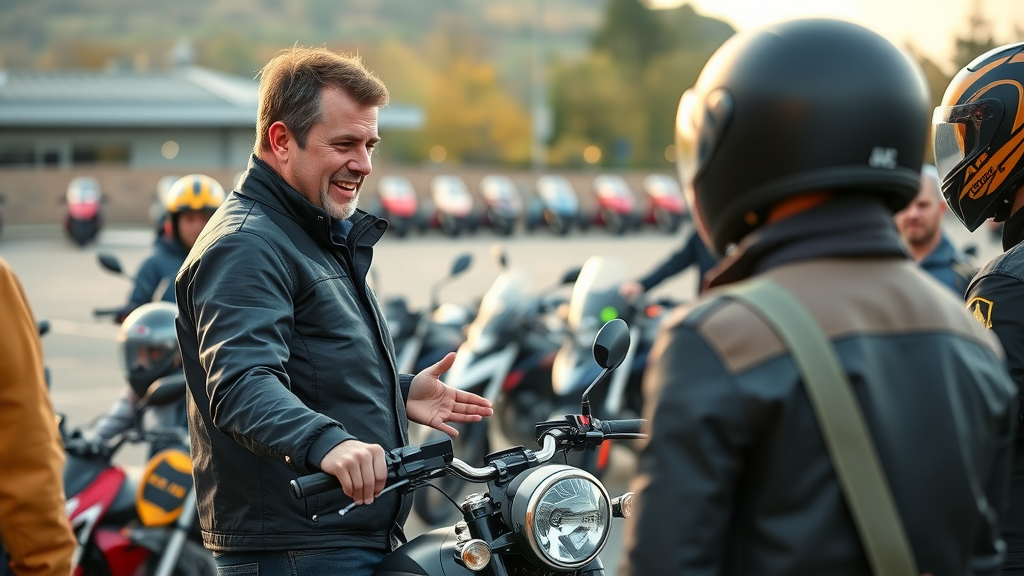
What are the top three defensive riding strategies new riders should focus on?
New riders should prioritize: (1) maintaining adequate following distances; (2) consistent mirror and blind spot checks; and (3) practicing anticipation through scanning for hazards. These habits form the bedrock of effective defensive riding skills and create valuable reaction time in emergencies.
How can experienced riders continue improving their defensive riding skills?
Experienced riders should seek out advanced courses, review dashcam footage to reinforce positive habits, and continually self-assess for complacency or risky shortcuts. Practicing in varied conditions—urban, rural, night, and wet weather—ensures your skills remain sharp and responsive.
What gear improves visibility and safety in urban environments?
Wearing bright or reflective clothing , high-visibility helmets, and equipping your motorcycle with daytime running lights or extra reflectors dramatically increases your presence on the road. Always use your turn signals and regularly check that your brake light is working correctly for maximum motorcycle safety .
Which riding techniques help avoid the majority of intersection accidents?
Intersections are hot spots for motorcycle accidents . Approaching them with reduced speed, covering the brakes, and watching for cars that may turn or run a light are critical. Always make eye contact with drivers when possible, use your horn if unsure they see you, and ride in a lane position that maximizes your visibility.
Key Takeaways: Implementing Defensive Riding Strategies to Stay Safe
-
Defensive riding strategies dramatically reduce risks and improve motorcycle safety.
-
Advanced situational awareness and proactive hazard management are vital riding skills for all riders.
-
Routine practice of defensive riding techniques saves lives on every journey.
Ready to Apply Defensive Riding Strategies? Start Your Safer Ride Today
Every day on your motorcycle is another chance to sharpen your defensive riding strategies and protect yourself from unnecessary risk. Take what you’ve learned in this guide and turn it into action—whether it’s rehearsing emergency braking, upgrading your safety gear, or simply adopting a more attentive rider mindset. The streets are unpredictable, but your preparation doesn’t have to be. Stay safe, be proactive, and enjoy the journey with confidence.
To enhance your understanding of defensive riding strategies, consider exploring the following resources:
-
Defensive Riding: Maximize Your Spring Motorcycle Rides with Proactive Strategies offers practical tips on maintaining safe following distances, effective lane positioning, and the importance of continuous learning to improve your riding skills.
-
Most Effective Defensive Riding Techniques for Motorcyclists provides insights into anticipating driver behavior, adapting to various road conditions, and mastering emergency braking techniques to enhance your safety on the road.
By delving into these articles, you’ll gain valuable knowledge to implement defensive riding strategies effectively, ensuring a safer and more enjoyable motorcycling experience.
 Add Row
Add Row  Add
Add 
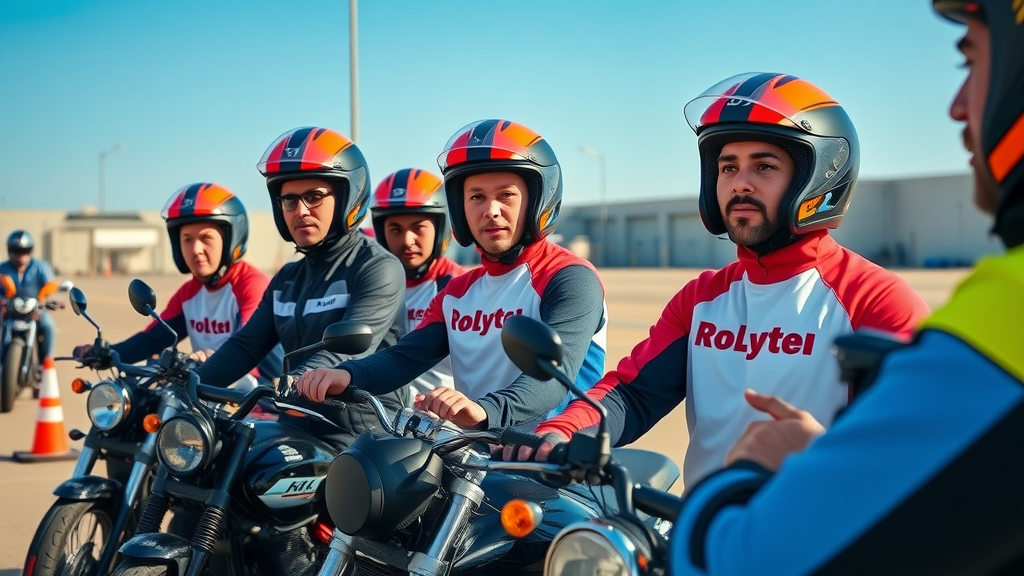

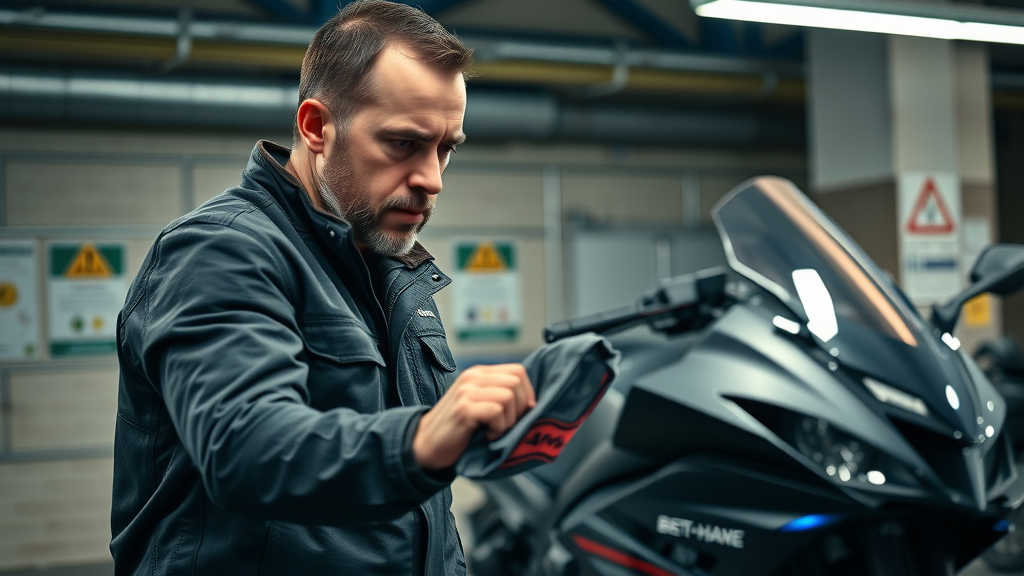
Write A Comment